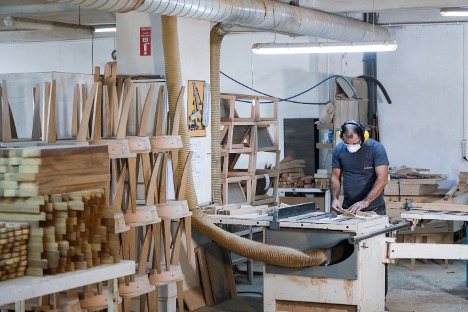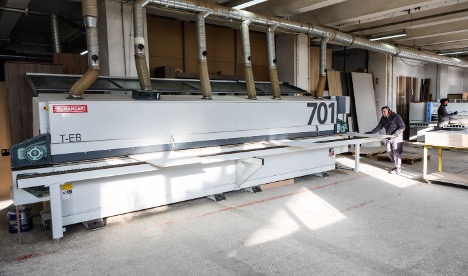New Balances Between Craftsmanship and Mass Production
New Balances Between Craftsmanship and Mass Production
The world of furniture and interior design has long been trying to strike a balance between two fundamental approaches: the uniqueness of craftsmanship and the speed and scalability of industrial production. In recent years, a new and creative meeting point has emerged between these two extremes. Today’s users demand products that meet high standards not only in terms of aesthetics but also functionality, quality, and sustainability. In response to these expectations, the design world is developing hybrid solutions that preserve artisanal details while leveraging the advantages of mass production.
Especially in recent international design events, the standout collections and approaches indicate that this transformation represents a profound restructuring not only in aesthetics but also in production strategies.
Craftsmanship: Details with a Story

Craftsmanship defines not only the form of a product but also its soul. The details shaped by skilled hands—stitch lines, surface treatments, joints, and forms—tell a story to the user. These details make each piece unique and give spaces character.
Today, many designers consider craftsmanship not merely as a nostalgic reference but as a value integrated into contemporary design. Hand-applied lacquer finishes on wood by Italian furniture brands or hand stitching on natural leather by Danish design studios are current examples of this approach. Craftsmanship strengthens not only the visual aspect of a product but also its tactile and emotional dimensions.
Industrial Production: Quality, Consistency, and Scale
While acknowledging the power of craftsmanship, it is also a fact that interior projects often require scalable, sustainable, and economical solutions. Mass production ensures quality standards, reduces material waste, and guarantees continuity in large-scale projects.
Thanks to new technologies, mass production is no longer limited to producing repetitive forms. Methods such as CNC cutting, robotic assembly, and digital stitching offer not only precision and speed but also flexible design possibilities. This makes it possible to develop products that carry the aesthetics of craftsmanship while offering superior production efficiency.
The Balance In-Between: Minimal Yet Full of Character
The new norm in design lies in the balance established between these two approaches. Neither purely handmade nor entirely machine-made... Today’s standout collections offer a unity that emphasizes craftsmanship while ensuring scalability through efficient production processes. Fine surface detailing, unique joint solutions, or material selections that engage the user demonstrate how this balance is reflected in architectural projects.

In Conclusion...
The design world now focuses not only on form but also on process. This new balance established between the elegant details of craftsmanship and the technical strength of mass production provides solutions that are both aesthetically and functionally satisfying. This approach enables architects to create not only visually powerful but also sustainable, scalable, and user-experience-enriching spaces. Combining the human touch with the possibilities of technology in design processes has become one of the most effective and meaningful production strategies of our time.
At Zivella, we believe in the importance of balancing craftsmanship and mass production. In our collections, we work with skilled artisans and combine details shaped with artisanal care with modern production systems. By supporting the sensory and narrative power of craftsmanship with the efficiency of mass production, we offer not only beautiful but also characterful, sustainable, and scalable products.
Latest Articles
-
Human-Centred Design: Ergonomics 4.0 in Office Furniture
-
When Design Meets Fashion: The Role of Aesthetics and Style in Workspaces
-
Thinking Through Textures: Sensory Experience Design in New Office Trends
-
The Power of Modularity: Infinite Combinations, Endless Creativity
-
New Balances Between Craftsmanship and Mass Production
-
Flexibility, Sustainability, and Functionality: The Contribution of Modular Furniture to Design
-
Sustainability and Flexibility Take Center Stage in 2025 Office Design
-
2025 Office Design Trends
-
Shaping the Future with Sustainable Materials
-
The Future of Office Design: A Performance-Based Approach
-
2024 Office Furniture Trends: Innovative and Dynamic Workspaces
-
How to Design an Efficient Office
-
Office Furniture Use in the Tourism Sector
-
Furniture in Co-working Spaces is Simple, Colorful and Modern
-
New Generation Offices for Gen Y and Z
-
Office Furniture Use in the Education Sector
-
We Will Be Back to Office Despite Everything
-
Resimercial Design in Modern Workplaces
-
Ergonomics = Comfort + Ease + Efficiency
-
A Few Tips for Home Offices
-
Offices Meeting the Expectations of Generations Y and Z
-
Shape of Tomorrow
